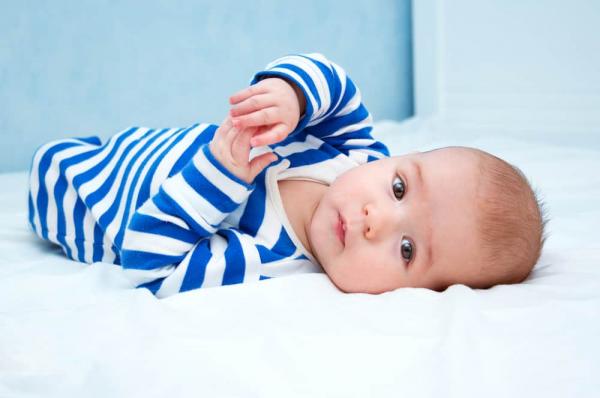
Even though there is no known cause, all deaths from Sudden Infant Death Syndrome (SIDS) have one link: it happens while the infant is asleep.
SIDS is the leading cause of infant deaths ages one to 12 months, according to experts. However, the rate is much lower than it used to be. When the American Academy of Pediatrics (AAP) started recommending that babies should be placed on their backs to sleep, the number of SIDS fatalities dropped by over 50 percent, according to the National Sleep Foundation. Even with this decline, the death rate by SIDS is still the leading cause of infant deaths, taking the lives of about 2,000 babies a year.
But since experts know when SIDS occurs, there are guidelines parents can follow to help prevent it:
Don't put stuffed animals in the crib
You might be tempted to put the cuddly teddy bear you had as a kid into the child's crib, but it could be dangerous. Experts say that soft items such as stuffed animals, pillows and quilts can create a barrier around the infant's nose and mouth, which affects their ability to breathe. Keep the soft items out of the crib until your child is older.
Don't put blankets in the crib
For the same reasons, don't use blankets. If you are worried about your little one getting cold, adjust the temperature and dress them in a few layers, but be careful of overheating.
Watch the temperature
Dress your child for the appropriate environment. A good rule to follow is to not go over one more layer than a typical adult would wear in those temperature conditions. Observe your infant to see how they are feeling. If your child is sweating or their chest feels hot to the touch, those are signs of overheating.
Use a firm sleep surface
Do not let your child sleep on a soft mattress. This can be a hazard because it could create pockets that hinder the infant's breathing, experts say.
Lay your child on their back to sleep
Sleeping on their back is the safest position for an infant, according to the American Academy of Pediatrics. Use back sleeping until your child is one. It is important to note that side sleeping is not the same as back sleeping, and experts say it is not safe.
When putting their baby to sleep in their back, some parents might be worried that their child could spit up and drown, since newborns don't have the strength to turn their head yet. If your child is prone to spitting up frequently, talk to a doctor. Some doctors will suggest a firm pillow wedge, but others say this could lead to SIDS if the infant were to accidentally wedge their head between the crib bars and the pillow. To determine what will work best for your baby, discuss your concerns with your child's pediatrician.
Don't co-sleep with your baby
Sleeping in the same bed as your baby increases the risk of SIDS for several reasons: the soft mattress, blankets, pillows and accidentally rolling on top of the baby. One study concluded that infants three months or younger who co-slept with an adult were five times more likely to die from SIDS compared to three-month-old infants who slept separately in the same room. If you feel more comfortable having your baby with you, have them sleep in their crib at your bedside.
About 90 percent of infant deaths due to SIDS occur in babies under six months, according to Baby Center. Once they reach their first birthday, they are no longer at risk of SIDS. This might be because older babies can overcome certain dangers while sleeping by removing the obstacle, waking up, crying out sooner or by better regulating their breathing, experts say.
You can do your part to prevent SIDS by educating yourself about it, being aware of what you can do to help avoid it and acting on that knowledge.

